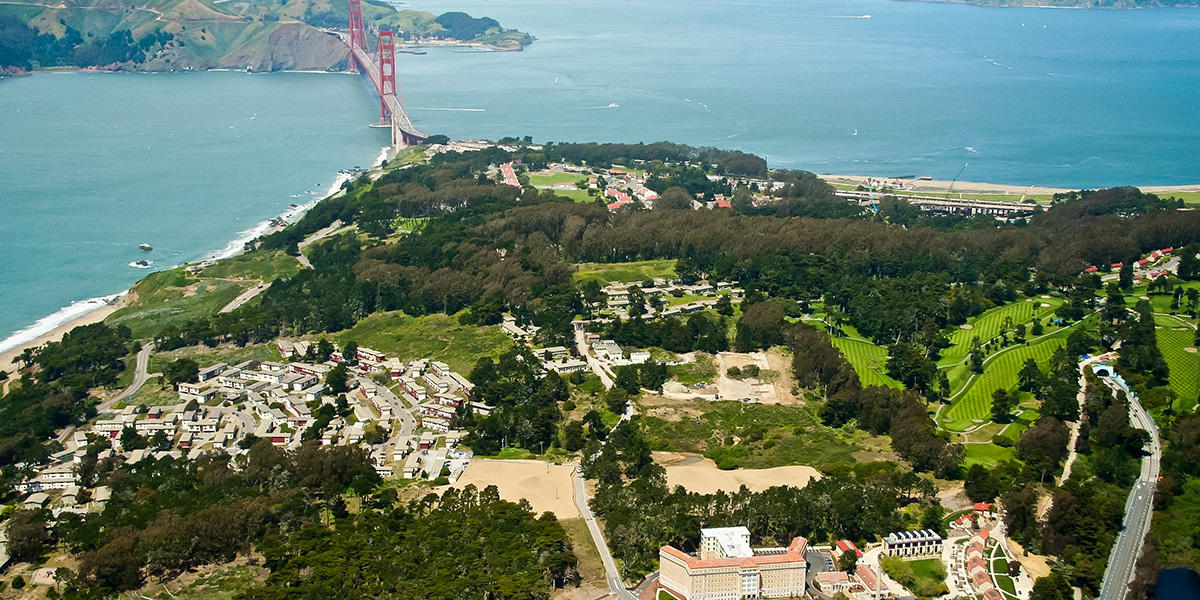The fires following the San Francisco earthquake of April 1906 provided a blank slate for City Beautiful planning. But unlike in other major US cities, the elegant city Burnham proposed never came to light, as a rapid rebuilding undermined the process. However, elements of the plan were executed later, such as tying transportation to scenic vistas, specifically with the Golden Gate Bridge.
A work of art, an engineering marvel, and an American icon, the suspension spans the distance between San Francisco and Marin counties. A classic interconnection of the forms of the open paradigm, San Francisco’s natural resources were carefully managed, with the bridge is flanked on both ends by the Golden Gate National Park, which was connected to the Civic Center planned by Burnham. From the multi-lane boulevard to the monumental urban greenery surrounded by dense building, the Golden Gate Bridge’s construction and waterfront parks were typical of defining public spaces of the time. Besides its practical use in opening communications between city districts, the bridge was also beautifying and become the most internationally recognized symbols of the city.
